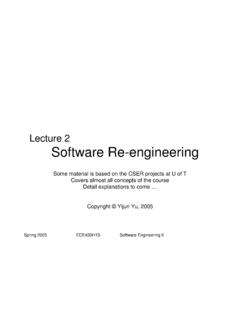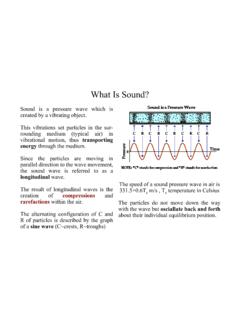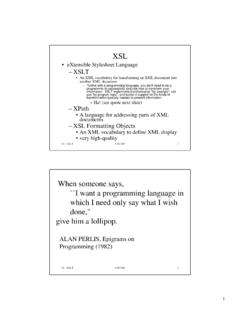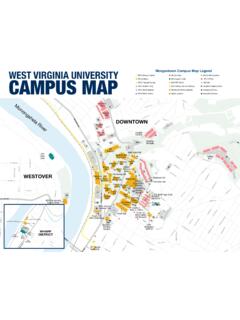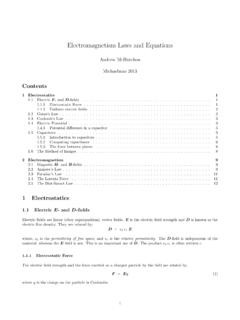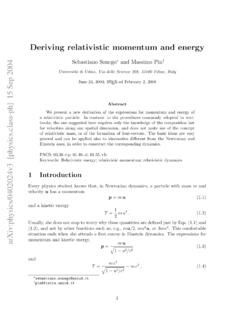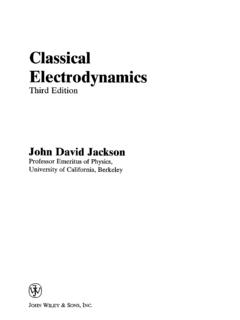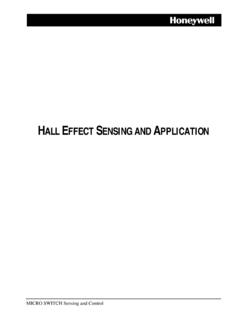Transcription of REPORTS - cs.toronto.edu
1 REPORTS . larized nearly vertically. For completeness, Fig. metamaterials would be highly desirable but is 1B shows the off-resonant case for the smaller currently not available. SRRs for vertical incident polarization. References and Notes Although these results are compatible with 1. J. B. Pendry, A. J. Holden, D. J. Robbins, W. J. Stewart, the known selection rules of surface SHG from IEEE Trans. Microw. Theory Tech. 47, 2075 (1999). usual nonlinear optics (23), these selection rules 2. J. B. Pendry, Phys. Rev. Lett. 85, 3966 (2000). do not explain the mechanism of SHG. Follow- 3. R. A. Shelby, D. R. Smith, S. Schultz, Science 292, 77 (2001). 4. T. J. Yen et al., Science 303, 1494 (2004). ing our above argumentation on the magnetic 5. S. Linden et al., Science 306, 1351 (2004). component of the Lorentz force, we numerically 6. C. Enkrich et al., Phys. Rev.
2 Lett. 95, 203901 (2005). calculate first the linear electric and magnet- 7. A. N. Grigorenko et al., Nature 438, 335 (2005). ic field distributions (22); from these fields, 8. G. Dolling, M. Wegener, S. Linden, C. Hormann, Opt. Express 14, 1842 (2006). we compute the electron velocities and the 9. G. Dolling, C. Enkrich, M. Wegener, C. M. Soukoulis, Lorentz-force field (fig. S1). In the spirit of a S. Linden, Science 312, 892 (2006). metamaterial, the transverse component of the 10. J. B. Pendry, D. Schurig, D. R. Smith, Science 312, 1780;. Lorentz-force field can be spatially averaged published online 25 May 2006. 11. U. Leonhardt, Science 312, 1777 (2006); published over the volume of the unit cell of size a by a online 25 May 2006. by t. This procedure delivers the driving force 12. M. W. Klein, C. Enkrich, M. Wegener, C. M. Soukoulis, for the transverse SHG polarization.
3 As usual, S. Linden, Opt. Lett. 31, 1259 (2006). the SHG intensity is proportional to the square 13. W. J. Padilla, A. J. Taylor, C. Highstrete, M. Lee, R. D. Averitt, modulus of the nonlinear electron displacement. Phys. Rev. Lett. 96, 107401 (2006). 14. D. R. Smith, S. Schultz, P. Markos, C. M. Soukoulis, Phys. Thus, the SHG strength is expected to be Rev. B 65, 195104 (2002). proportional to the square modulus of the 15. S. O'Brien, D. McPeake, S. A. Ramakrishna, J. B. Pendry, driving force, and the SHG polarization is Phys. Rev. B 69, 241101 (2004). Fig. 3. Theory, presented as the experiment (see directed along the driving-force vector. Cor- 16. J. Zhou et al., Phys. Rev. Lett. 95, 223902 (2005). Fig. 1). The SHG source is the magnetic compo- 17. A. K. Popov, V. M. Shalaev, available at responding results are summarized in Fig. 3 in abs/physics/0601055 (2006).
4 Nent of the Lorentz force on metal electrons in the same arrangement as Fig. 1 to allow for a 18. V. G. Veselago, Sov. Phys. Usp. 10, 509 (1968). the SRRs. direct comparison between experiment and 19. M. Wegener, Extreme Nonlinear Optics (Springer, Berlin, theory. The agreement is generally good, both 2004). 20. H. M. Barlow, Nature 173, 41 (1954). The setup for measuring the SHG is described for linear optics and for SHG. In particular, we 21. Chen, M. Maksimchuk, D. Umstadter, Nature 396, in the supporting online material (22). We expect find a much larger SHG signal for excitation of 653 (1998). that the SHG strongly depends on the resonance those two resonances (Fig. 3, A and C), which 22. Materials and Methods are available as supporting that is excited. Obviously, the incident polariza- are related to a finite magnetic-dipole moment material on Science Online.
5 (perpendicular to the SRR plane) as compared 23. P. Guyot-Sionnest, W. Chen, Y. R. Shen, Phys. Rev. B 33, tion and the detuning of the laser wavelength 8254 (1986). from the resonance are of particular interest. One with the purely electric Mie resonance (Figs. 24. We thank the groups of S. W. Koch, J. V. Moloney, and possibility for controlling the detuning is to 1D and 3D), despite the fact that its oscillator C. M. Soukoulis for discussions. The research of change the laser wavelength for a given sample, strength in the linear spectrum is comparable. is supported by the Leibniz award 2000 of the which is difficult because of the extremely broad The SHG polarization in the theory is strictly Deutsche Forschungsgemeinschaft (DFG), that of through a Helmholtz-Hochschul-Nachwuchsgruppe (VH-NG-232). tuning range required. Thus, we follow an vertical for all resonances.
6 Quantitative devia- Supporting Online Material alternative route, lithographic tuning (in which tions between the SHG signal strengths of ex- the incident laser wavelength of mm, as well periment and theory, respectively, are probably Materials and Methods as the detection system, remains fixed), and tune due to the simplified SRR shape assumed in Figs. S1 and S2. the resonance positions by changing the SRR our calculations and/or due to the simplicity of References size. In this manner, we can also guarantee that our modeling. A systematic microscopic theory 26 April 2006; accepted 22 June 2006. the optical properties of the SRR constituent of the nonlinear optical properties of metallic materials are identical for all configurations. The blue bars in Fig. 1 summarize the measured SHG. signals. For excitation of the LC resonance in Fig. 1A (horizontal incident polarization), we find Reducing the Dimensionality of an SHG signal that is 500 times above the noise level.
7 As expected for SHG, this signal closely scales with the square of the incident power Data with Neural Networks (Fig. 2A). The polarization of the SHG emission G. E. Hinton* and R. R. Salakhutdinov is nearly vertical (Fig. 2B). The small angle with respect to the vertical is due to deviations from High-dimensional data can be converted to low-dimensional codes by training a multilayer neural perfect mirror symmetry of the SRRs (see network with a small central layer to reconstruct high-dimensional input vectors. Gradient descent electron micrographs in Fig. 1). Small detuning can be used for fine-tuning the weights in such autoencoder'' networks, but this works well only if of the LC resonance toward smaller wavelength the initial weights are close to a good solution. We describe an effective way of initializing the ( , to wavelength) reduces the SHG weights that allows deep autoencoder networks to learn low-dimensional codes that work much signal strength from 100% to 20%.
8 For ex- better than principal components analysis as a tool to reduce the dimensionality of data. citation of the Mie resonance with vertical incident polarization in Fig. 1D, we find a small imensionality reduction facilitates the finds the directions of greatest variance in the signal just above the noise level. For excitation of the Mie resonance with horizontal incident polarization in Fig. 1C, a small but significant D classification, visualization, communi- cation, and storage of high-dimensional data. A simple and widely used method is data set and represents each data point by its coordinates along each of these directions. We describe a nonlinear generalization of PCA that SHG emission is found, which is again po- principal components analysis (PCA), which uses an adaptive, multilayer Bencoder[ network 504 28 JULY 2006 VOL 313 SCIENCE REPORTS . to transform the high-dimensional data into a Starting with random weights in the two called an Bautoencoder[ and is depicted in low-dimensional code and a similar Bdecoder[ networks, they can be trained together by Fig.]]]
9 1. network to recover the data from the code. minimizing the discrepancy between the orig- It is difficult to optimize the weights in inal data and its reconstruction. The required nonlinear autoencoders that have multiple Department of Computer Science, University of Toronto, 6 gradients are easily obtained by using the chain hidden layers (2 4). With large initial weights, King's College Road, Toronto, Ontario M5S 3G4, Canada. rule to backpropagate error derivatives first autoencoders typically find poor local minima;. *To whom correspondence should be addressed; E-mail: through the decoder network and then through with small initial weights, the gradients in the the encoder network (1). The whole system is early layers are tiny, making it infeasible to train autoencoders with many hidden layers. If the initial weights are close to a good solution, Decoder gradient descent works well, but finding such 30.
10 Initial weights requires a very different type of W4 algorithm that learns one layer of features at a Top 500 time. We introduce this Bpretraining[ procedure RBM. T T. W1 W 1 + 8 for binary data, generalize it to real-valued data, 2000 2000 and show that it works well for a variety of 500. T. W2. T. W 2 + 7 data sets. W3 1000 1000 An ensemble of binary vectors ( , im- 1000 T. W3. T. W 3 + 6 ages) can be modeled using a two-layer net- RBM. 500 500 work called a Brestricted Boltzmann machine[. T. W4 T. W 4 + 5. (RBM) (5, 6) in which stochastic, binary pixels 30 Code layer 30. are connected to stochastic, binary feature 1000 detectors using symmetrically weighted con- W4 W 4 + 4. W2 nections. The pixels correspond to Bvisible[. 2000 500 500. RBM units of the RBM because their states are W3 W 3 + 3. observed; the feature detectors correspond to 1000 1000. Bhidden[ units.]]]]

